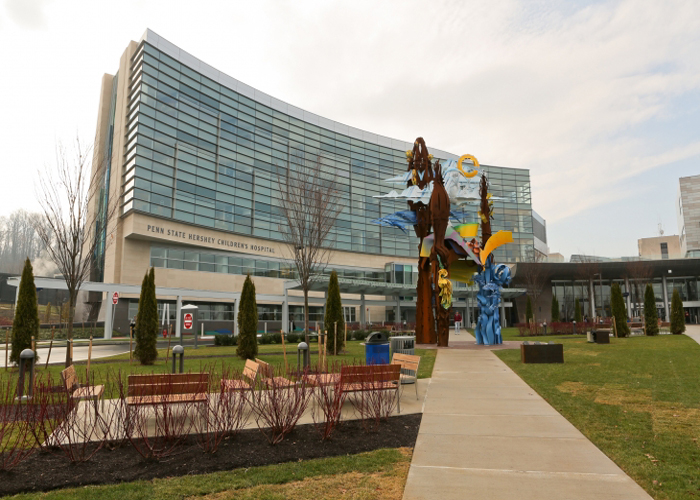We know that Six Sigma has found a happy home in the healthcare sector, helping to address everything from patient safety to resource utilization. So too has Lean established its relevance as a beneficial management methodology in the industry.
Penn State Hershey Children’s Hospital realized a host of benefits when it applied Lean’s streamlining aspects to its discharging practices. Not only did it speed the process, but the effort also produced the welcome side effects of happier patients – along with a boost in revenues.
Image: Darrell Peterson, Penn State Hershey
Lean focuses on the customer and ways to improve that relationship by eliminating or reducing wasteful activities that don’t add to the end product. In Hershey’s case, a research team spent six months using Lean as a basis for addressing the amount of time the center’s physicians spent on rounds.
It was found that limited time spent per patient slowed the discharge process, which led to new patients being turned away for lack of available beds. Michael Beck, associate professor of pediatrics at Penn State College of Medicine and a physician at Penn State Hershey Children’s Hospital, led the Lean project to find a solution.
The underlying issue: Each physician carried a typical caseload of 15 patients and spent about three hours seeing them on daily rounds. This translated to no more than 11 minutes with each patient – a sparsity of bedside time that delayed the completion of the discharge process.
 The new Lean model entailed forming an additional rounding team, resulting in two functional teams that worked in parallel, with caseloads equally divided. Each team was comprised of an attending physician and, at minimum, one senior resident and one intern.
The new Lean model entailed forming an additional rounding team, resulting in two functional teams that worked in parallel, with caseloads equally divided. Each team was comprised of an attending physician and, at minimum, one senior resident and one intern.
Researchers introduced new discharge checklists that served to standardize the process. The departure paperwork was completed at the bedside. Additionally, an evening meeting of all the support staff was initiated to ensure barriers to the next morning’s discharges were both identified and managed.
With this new model, Beck said in a news release, “we spend more time in the patients’ rooms, engaging them in discussions and teaching the residents and med students. This approach appears to be effective and more efficient, but it also appears to be a staff and customer satisfier, which are key elements in sustainability.”
The greater upfront investment of time in patients’ rooms paid off at the back-end, with discharge times trimmed by a full 90 minutes, which translated into a 45% boost in discharges – without increased lengths of stay or readmission rates.
It also resulted in only one referral being diverted during the study period, versus 20 in the same period the previous year. Another measure, the amount of time patients waited without an available room for inpatient admission, saw a 22% drop.
The financial effect was estimated at between $275,000 and $412,000 in additional revenue. ED boarding hours – the time patients waited without an available room for inpatient admittance – were reduced by 22%.
Beck pointed out that with discharge delays decreased, patient satisfaction went up. Surveys found that 75% of patients would recommend the hospital, versus 53% prior to the study.
Moreover, physicians were please with the new process, even though staffing two teams added an average of two to three extra work weeks to their schedule during the study period. Still, 100% voted to continue with the new approach.
Beck also noted that the Lean solution is worth looking at as a means of addressing a widespread national concern among hospitals. Capacity problems mean that admitted patients may be “boarded” in the emergency department, and elective and urgent care may be delayed. Patients may also be referred to another hospital.
Such limitations in access to care are producing overcrowding and patient safety concerns, particularly in emergency departments, across the U.S.
If more hospitals could speed the rate of patient discharges using Lean approaches, it could certainly cure a host of ills.

